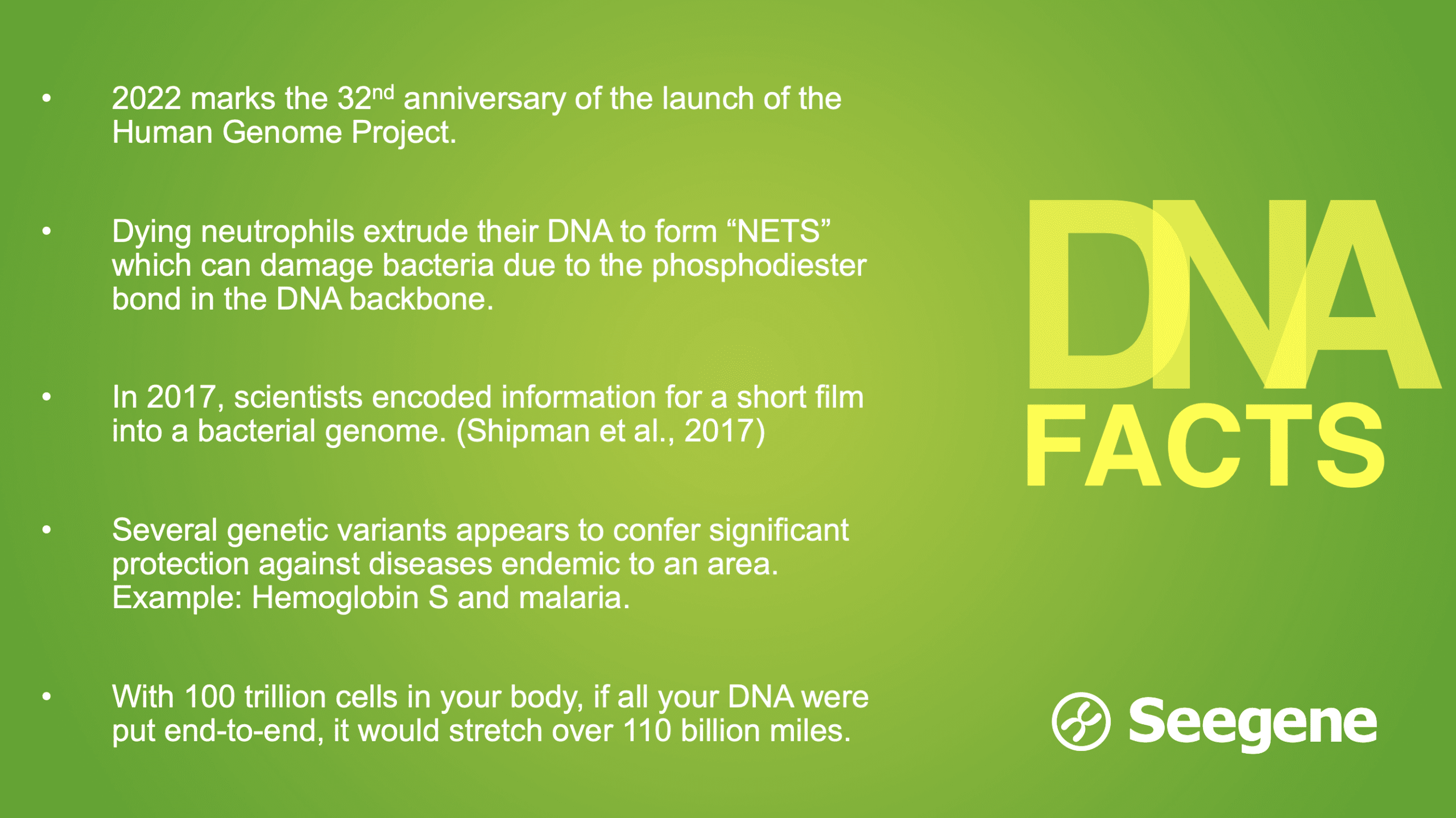Celebrate DNA Day!
Congress approved the first National DNA Day in April 2003 to celebrate both the completion of the Human Genome Project and the 50th anniversary of the discovery of the double-helix structure of DNA.
Here are some fun facts related to DNA:

Fact #1: 2022 marks the 32nd anniversary of the launch of the Human Genome Project.
The National Human Genome Research Institute (NHGRI) started celebrating DNA Day on April 25th every year after the 108th Congress passed concurrent resolutions designating it as DNA Day. This day offers us an opportunity to learn more about the advances in genomic research.
Source: National Human Genome Research Institute
Fact #2: Dying neutrophils extrude their DNA to form “NETS” which can damage bacteria due to the phosphodiester bond in the DNA backbone.
Neutrophils are a type of White blood cells and are our immune system’s first line of defense. They are also the most abundant white blood cells in humans.
In a review by Sørensen and Borregaard, the authors studied the fundamental mechanisms of Neutrophil extracellular traps (NETs) formation. When microbes invade through skin or mucosa, a cascade of mechanisms recruits neutrophils. Neutrophils then release vesicles containing decondensed DNA complexed with histones and granule proteins, and disruption of these vesicles releases NETs. The phosphodiester bond of this DNA can damage bacteria as they are strong chelators of divalent cations.
Source: Neutrophil extracellular traps — the dark side of neutrophils
Fact #3: In 2017, scientists encoded information for a short film into a bacterial genome
In a recent work by Shipman et al. (2017), they harnessed CRISPR-Cas microbial immune system to encode real information such as pixel values of black and white images of a human hand, as well as a short movie (GIF) into the bacterial genome. The authors were then able to reconstruct the GIF from the bacterial genome with high accuracy.
Source: CRISPR–Cas encoding of a digital movie into the genomes of a population of living bacteria
Fact #4: Several genetic variants appear to confer significant protection against diseases endemic to an area. (Example: Hemoglobin S and malaria)
It has been reported that many individual genetic variants have been correlated with protection against malaria. These variants have all been related to the structure or function of red blood cells (RBCs). According to a study by Kariuki and Williams (2020), characterising how these genes confer their effects could lead to novel therapeutic approaches to combat malaria.
Source: Human genetics and malaria resistance
Fact #5: With 100 trillion cells in your body, if all of your DNA were put end-to-end, it would stretch over 110 billion miles.
6 feet- That’s how long the strands of DNA in each of our cells would be if they were unwound and linked together!
Source: 6 Weird But True Facts About DNA
